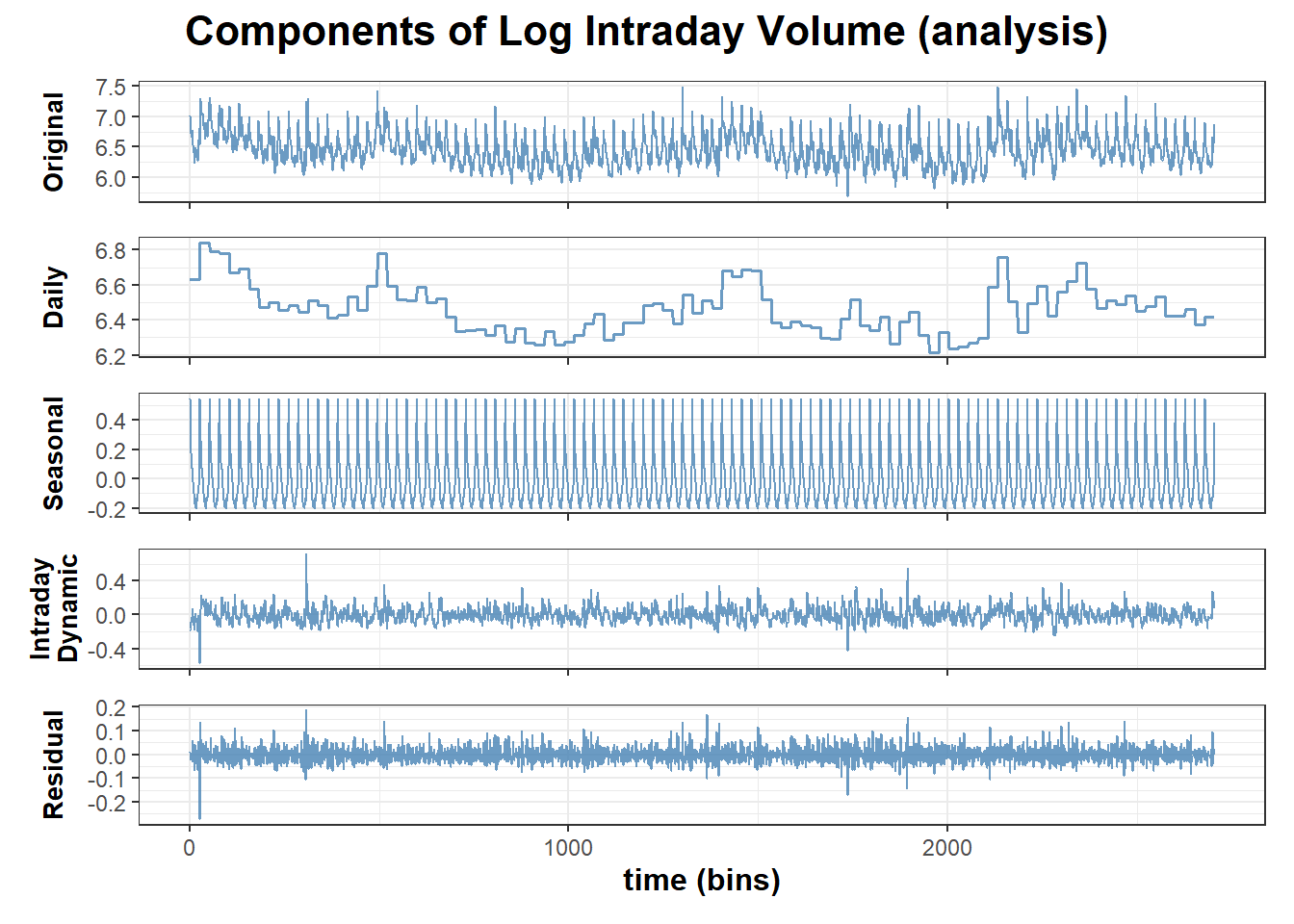
The hardware and bandwidth for this mirror is donated by dogado GmbH, the Webhosting and Full Service-Cloud Provider. Check out our Wordpress Tutorial.
If you wish to report a bug, or if you are interested in having us mirror your free-software or open-source project, please feel free to contact us at mirror[@]dogado.de.
Our package uses state-of-the-art state-space models to facilitate the modeling and forecasting of financial intraday signals. It currently offers a univariate model for intraday trading volume, with new features on intraday volatility and multivariate models in development. It is a valuable tool for anyone interested in exploring intraday, algorithmic, and high-frequency trading.
The package can be installed from GitHub:
# install development version from GitHub
devtools::install_github("convexfi/intradayModel")Please cite intradayModel in publications:
citation("intradayModel")To get started, we load our package and sample data: the 15-minute intraday trading volume of AAPL from 2019-01-02 to 2019-06-28, covering 124 trading days. We use the first 104 trading days for fitting, and the last 20 days for evaluation of forecasting performance.
library(intradayModel)
data(volume_aapl)
volume_aapl[1:5, 1:5] # print the head of data
#> 2019-01-02 2019-01-03 2019-01-04 2019-01-07 2019-01-08
#> 09:30 AM 10142172 3434769 20852127 15463747 14719388
#> 09:45 AM 5691840 19751251 13374784 9962816 9515796
#> 10:00 AM 6240374 14743180 11478596 7453044 6145623
#> 10:15 AM 5273488 14841012 16024512 7270399 6031988
#> 10:30 AM 4587159 18041115 8686059 7130980 5479852
volume_aapl_training <- volume_aapl[, 1:104]
volume_aapl_testing <- volume_aapl[, 105:124]Next, we fit a univariate state-space model using
fit_volume() function.
model_fit <- fit_volume(volume_aapl_training)Once the model is fitted, we can analyze the hidden components of any
intraday volume based on all its observations. By calling
decompose_volume() function with
purpose = "analysis", we obtain the smoothed daily,
seasonal, and intraday dynamic components. It involves incorporating
both past and future observations to refine the state estimates.
analysis_result <- decompose_volume(purpose = "analysis", model_fit, volume_aapl_training)
# visualization
plots <- generate_plots(analysis_result)
plots$log_components
To see how well our model performs on new data, we call
forecast_volume() function to do one-bin-ahead forecast on
the testing set.
forecast_result <- forecast_volume(model_fit, volume_aapl_testing)
# visualization
plots <- generate_plots(forecast_result)
plots$original_and_forecast
We welcome all sorts of contributions. Please feel free to open an issue to report a bug or discuss a feature request.
If you make use of this software please consider citing:
Package: GitHub
Vignette: GitHub-vignette.
These binaries (installable software) and packages are in development.
They may not be fully stable and should be used with caution. We make no claims about them.
Health stats visible at Monitor.